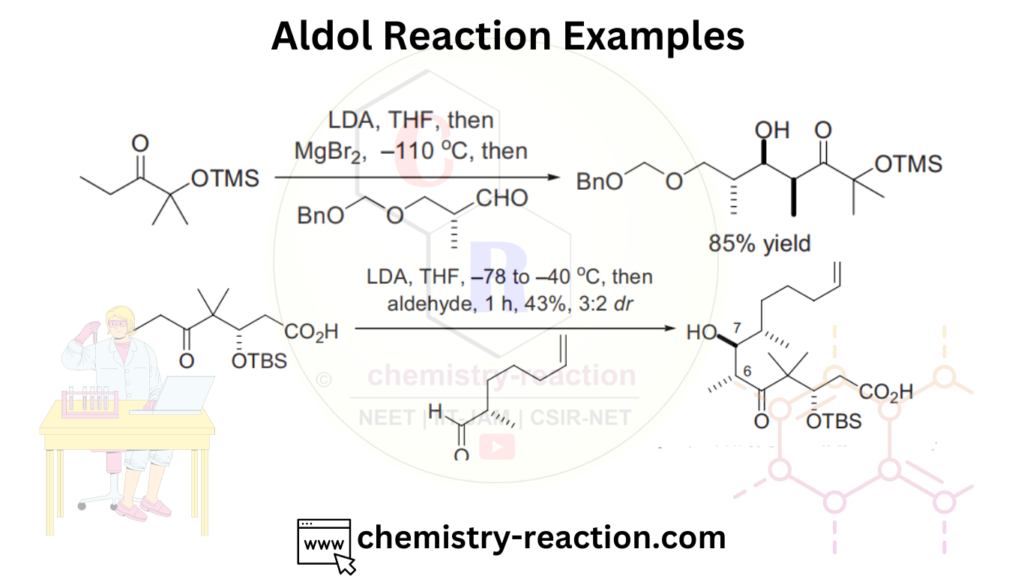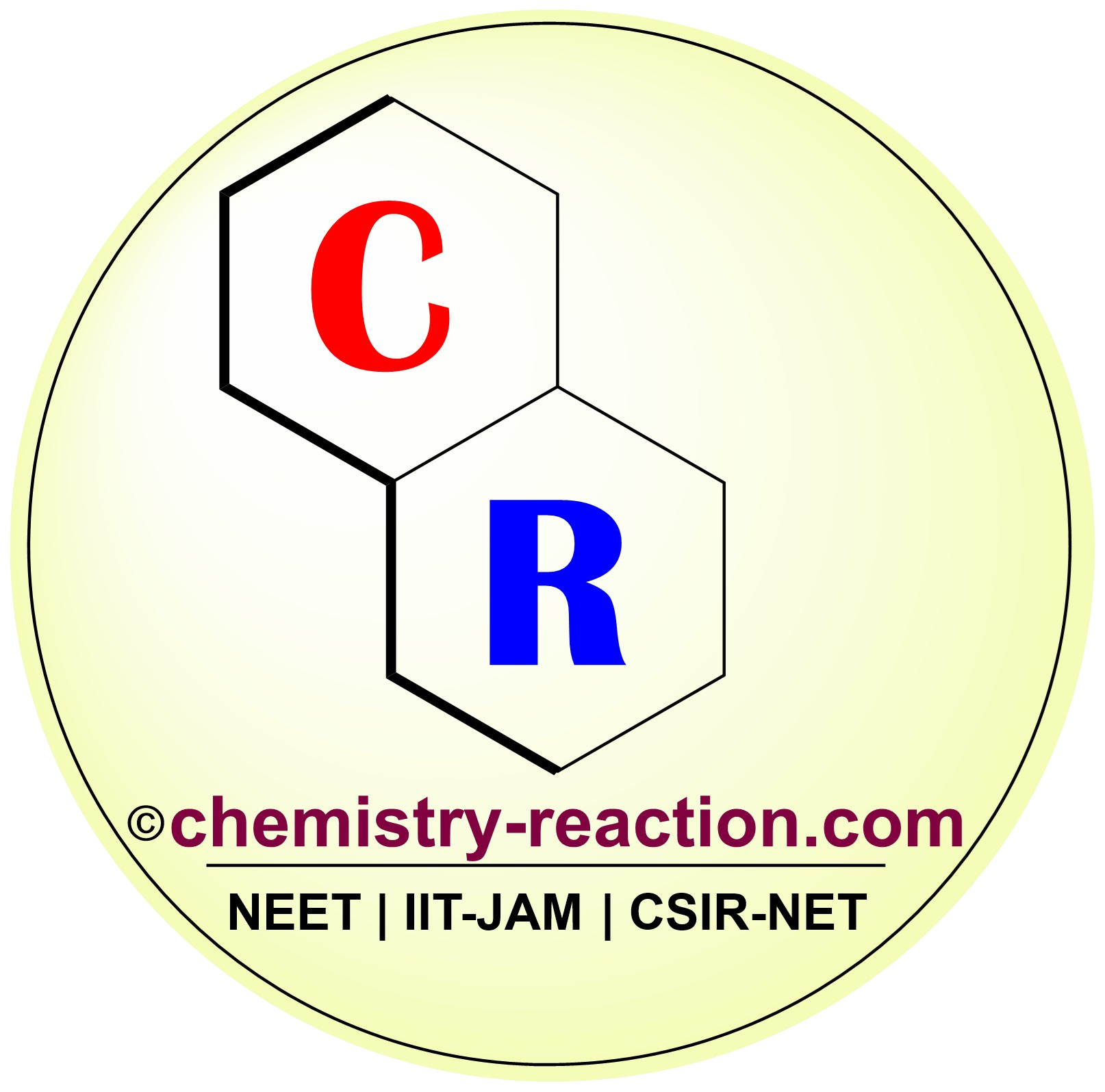Definitionn: The Aldol reaction is a versatile carbon-carbon bond-forming reaction in organic chemistry. It involves the condensation of an enol or enolate (derived from a carbonyl compound) with another carbonyl compound, forming a β-hydroxy carbonyl compound, known as an aldol product.
The reaction takes its name from the combination of “aldehyde” and “alcohol,” as the aldol product contains both aldehyde (or ketone) and alcohol functional groups. The Aldol reaction can be classified into two main types: the crossed Aldol reaction, which involves the reaction between two different carbonyl compounds, and the self-Aldol reaction, which occurs when a carbonyl compound reacts with itself.

Table of Page Contents
Mechanism of the Aldol Reaction :
The mechanism of the Aldol reaction involves following steps:
- Formation of the enolate or enol: The carbonyl compound, typically an aldehyde or a ketone, is deprotonated under basic or acidic conditions to form an enolate or enol. The enolate is a resonance-stabilized anion.
- Nucleophilic attack: The enolate or enol attacks the carbonyl carbon of another carbonyl compound. This nucleophilic attack leads to the formation of a new carbon-carbon bond and the creation of an alkoxide or alkoxide-like intermediate.
- Proton transfer: The alkoxide intermediate undergoes a proton transfer step, where a proton is transferred from the oxygen atom of the alkoxide group to a neighboring oxygen atom. This step is essential for generating the desired β-hydroxy carbonyl product.
- Tautomerization: The β-hydroxy carbonyl compound can undergo tautomerization, converting it to its more stable keto or enol form. This tautomerization step is reversible and dependent on the reaction conditions.

Examples of Aldol Reaction :
Aldol reaction formula, aldol reaction reagents, intramolecular aldol reaction.

Related Reactions:
- Acetoacetic-Ester Condensation (Claisen Condensation)
- Acyloin Condensation
- Benzoin and Retro-Benzoin Condensation
- Claisen Condensation/Claisen Reaction
- Darzens Glycidic Ester Condensation
- Dieckmann Condensation
- Knoevenagel Condensation
- Stobbe Condensation
References :
- Aldol-Addition- OCP
- Aldol Reaction – an overview
- The Complete Mechanism of an Aldol Condensation – ACS
Aldol reaction, aldol condensation reaction, cross aldol condensation, aldol condensation class 12, cross aldol condensation reaction, aldol condensation reaction class 12, Aldol reaction mechanism, Aldol reaction formula, Aldol reaction example, Aldol reaction class 12, aldol reaction examples, cross aldol reaction, aldol reaction reagents, intramolecular aldol reaction.
My name is Pradip Sanjay W. I’m an organic chemist originally from Maharashtra, India. I have qualified UGC NET-JRF, GATE in chemical sciences and MH-SET exam for assistant professor. I’m currently pursuing my Ph.D. in organic chemistry at the Indian Institute of Technology Hyderabad, India.
